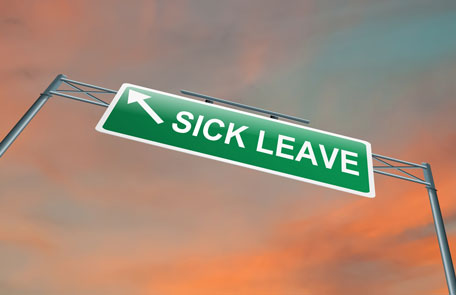Join us February 13 for ABC’s Annual Legislative Reception;
MAKE YOUR VOICE KNOWN
As Maryland continues to work its way back to a strong economy, Maryland Healthy Working Families Act (aka ‘Sick and Safe’), could erode the foundation for success for employers and job creators statewide. Despite failing to pass similar legislation in 2015 and 2016, and other previous incarnations of sick and safe, bills in the House (HB 1) and the Senate (SB 230) are garnering wide-spread support.
Here’s how this legislation undermines Maryland’s economic progress and hampers the commercial construction industry:
Sick and Safe Lacks Preemption
Maryland’s new attempt at sick and safe legislation is the latest example of proposed state laws conflicting with current or pending county laws. Montgomery County, Prince George’s County and Baltimore City already have their own sick and safe legislation that would conflict with HB1. Commercial contractors in Maryland often operate in more than one county. They already face a logistical nightmare trying to navigate the different requirements of each county. HB1 adds to the burden placed on contractors, who are often small businesses. HB1 adds to both the perception and reality that Maryland is tough on employers.
Union Exemption
Under HB 1, union employers receive special treatment. Those employers in the construction industry that are covered by a collective bargaining agreement are exempt from providing the sick leave required by HB 1. All Collective Bargaining Agreements should either be recognized or not, but carving out separate business sectors is not a precedent we should set.
Small Businesses Burdened
This legislation would require that employers with as few as 15 employees provide earned sick leave. A business of this size is considered small and small businesses in Maryland do not need more stringent mandates that lead to stunted growth.
The cost to the construction industry to implement and administer a paid sick leave law would be significant. Last year’s fiscal note, estimated the cost per employee for employers with 15 or more employees to be the equivalent of a $445 per employee increase—an estimate we believe is low. For some companies and their employees, especially those with a small number of workers, the end result may be a loss in other types of benefits that are not mandated, a freeze on salaries, or, in the worst case scenario, a reduction in the number of employees to offset the increase in costs
When it comes to sick leave, employees are already protected under the Federal Family and Medical Leave Act of 1993 (FMLA), which requires covered employers to provide eligible employees with up to 12 work weeks of unpaid leave during any 12 month period under certain conditions. The Senate and the House bills provide up to 80 Hours of paid leave, a particular hardship for contractors as they try to fully staff construction projects. For merit shop construction industry employers that already provide discretionary leave for their employees, another concern is the uncertainty of how HB1 will affect leave already in place. As with previous proposed legislation, there are several provisions in HB1 that conflict with the FMLA.
We urge small business owners everywhere to continue to say “No” to legislation that would add yet another burden on Maryland businesses as they work to bolster the state’s economy. A one size fits all mandate does not work for business.

